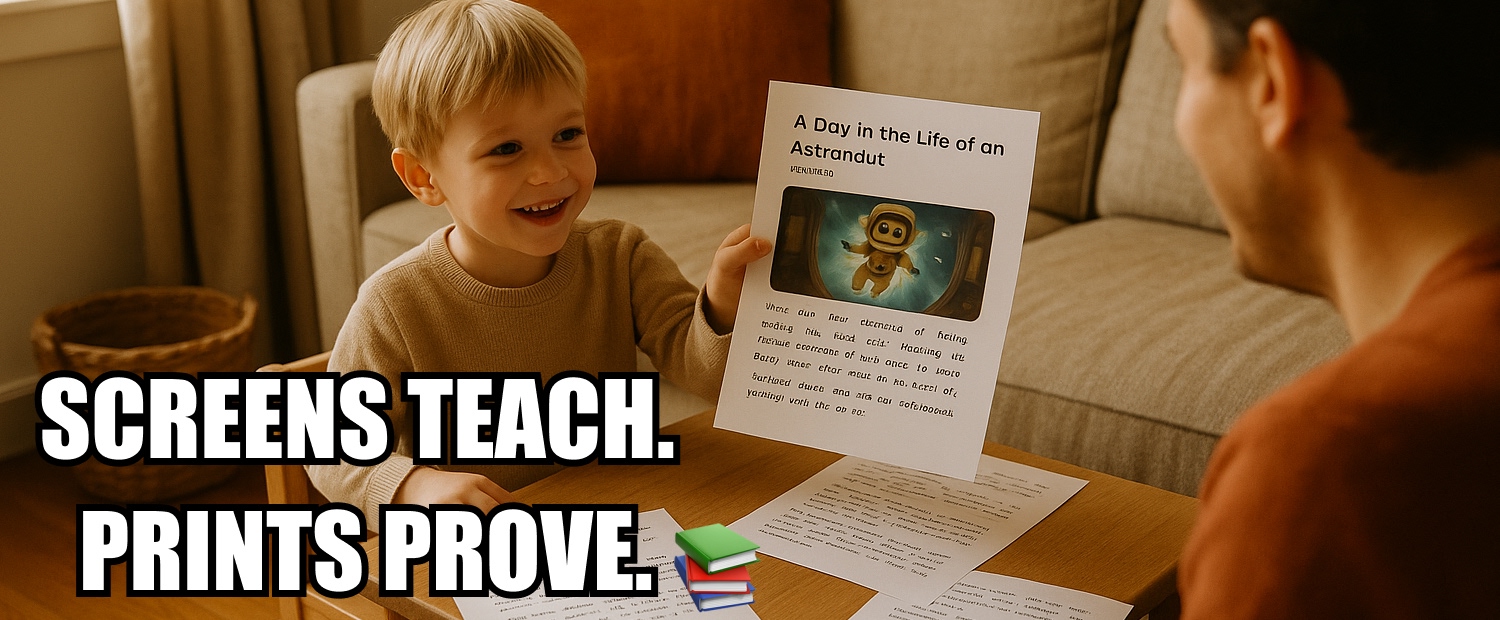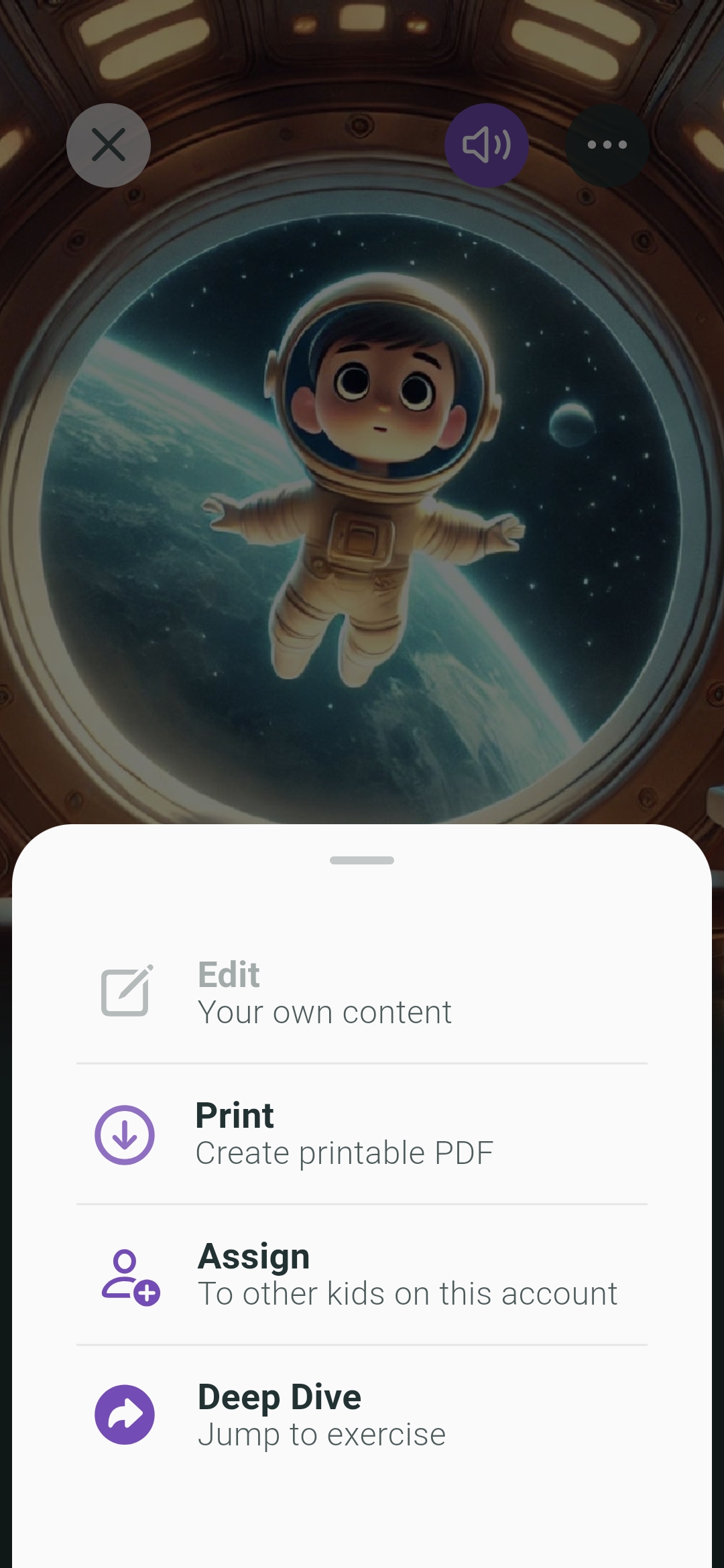Summary: What You’ll Learn in This Article

- Why some kids benefit from having both digital and paper versions of stories
- How the Science of Reading explains the value of variety and repetition
- How KOBI makes it easy to print stories for offline practice
- Simple ways parents can use printed PDFs to boost confidence at home
- Reflection prompts to notice what format works best for your child
Why Printed Options Matter
Screens are powerful tools for learning – especially when paired with interactive features like TapTap, WordBlaster, and ThinkTalk. But sometimes, kids benefit from holding a story in their hands. Printing gives them a different sensory experience and makes rereading easy anywhere – at the table, in the car, or curled up before bed.
With KOBI, families don’t have to choose between digital and paper. Every story can live in both worlds.

Why Science Says So
Research in literacy and child development shows:
- Multisensory input builds stronger connections – seeing, hearing, and touching words in different formats reinforces learning (Wolf, 2007).
- Rereading deepens fluency – whether on-screen or on paper, repeated exposure builds automaticity (Samuels, 1979).
- Choice fuels motivation – when kids have a say in how they practice, they’re more engaged and persistent (Deci & Ryan, 2000).
In short: variety isn’t a distraction – it’s a strength.

How to Use KOBI’s Print Option at Home
Here’s how you can blend digital practice with printable stories in a way that sticks:
Step 1: Create or Choose a Story
From Snap-a-Story, Story Shaker, or the KOBI Library, let your child pick a tale that excites them.

Step 2: Read Digitally With Support
Start with on-screen practice using tools like TapTap for tricky words, Pictionary for meaning, or Magic Finger for focus.
Step 3: Print for Offline Practice
Tap the print option to generate a clean, simple PDF. Kids can reread it aloud, highlight words, or even decorate the margins.
Step 4: Reread and Revisit
Whether online or offline, encourage your child to reread the story multiple times. Confidence builds as the words become familiar.
Step 5: Mix It Up
Use the PDF for variety: pin it to the fridge, slip it into a binder, or bring it along for quiet reading time away from screens.
Tips for Parents: Making Print Work for You
- Alternate formats: Try digital first, then a paper reread the next day.
- Keep it visible: Pin the story somewhere your child will see it often.
- Track progress: Let kids highlight words they’ve mastered or star their favorite parts.
- Make it creative: Encourage doodles or notes in the margins – it builds ownership.
Why Homeschoolers Love KOBI’s Print Option
- Offers flexibility between digital practice and offline reading
- Makes it easy to reinforce tricky words in multiple ways
- Keeps stories portable – perfect for travel or screen-free time
- Adds variety without extra planning or materials

Print + Digital = Stronger Practice
Reading doesn’t have to be digital-only or paper-only. The best progress often comes from giving kids both: interactive support on-screen and the comfort of a printed page.
With KOBI, families get the freedom to choose – and the confidence that either way, kids are building stronger reading habits.
Key Takeaways
- Variety strengthens learning – digital and print both matter
- Science shows multisensory practice builds fluency and confidence
- KOBI makes printing simple for families who want stories offline
- Mixing formats keeps practice engaging and effective

